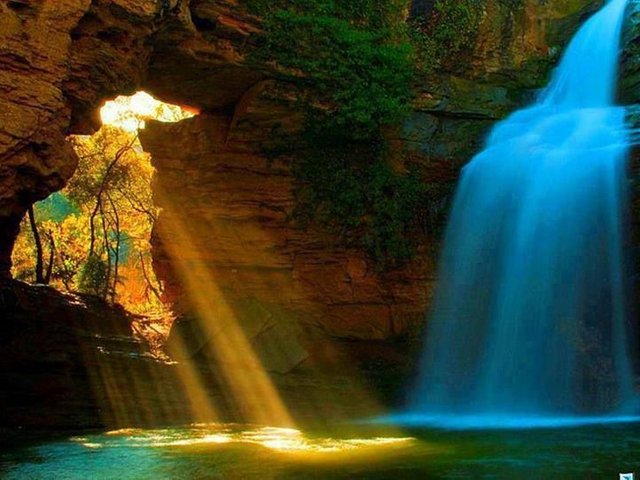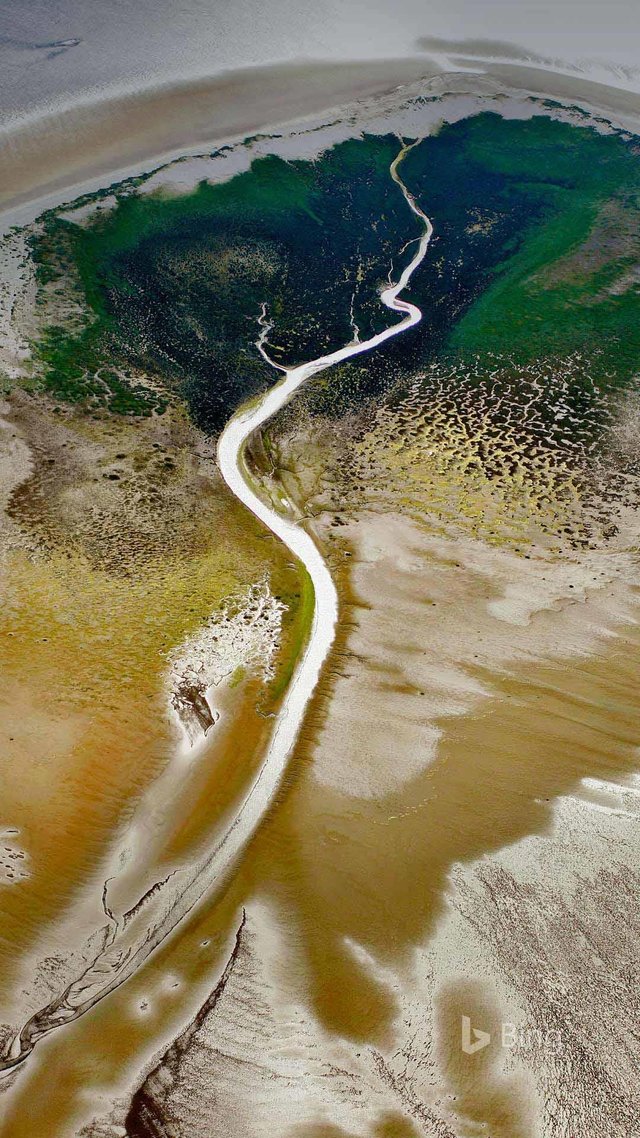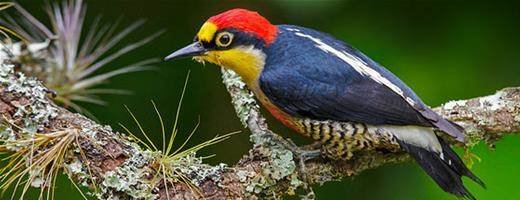
Limestone cliffs in Foradada, Catalonia, Spain
Credit: bing.com
The Cantonigròs waterfall and natural pool are sometimes called the La Foradada Falls, a name shared with the local area, and a mountain a little further east, toward the Mediterranean coast of Spain. Though the light and shadow of this photo make it look as though we’re in a cave, the limestone walls are open at the top, allowing easy access to the falls for locals and tourists alike.

Credit: bing.com
Greater flamingos in Tanzania
They’re called ‘greater flamingos’ for good reason: This marsh-wading bird is the largest of the flamingos and also the most widely distributed across the globe. This particular group is taking wing in Tanzania on Africa’s east coast, but the large, pink birds make a home on nearly every part of Africa’s coasts, into the Indian subcontinent, and around the Caribbean. One of the largest male greater flamingos observed was more than 1.83 metres tall. That’s no lawn ornament.

Credit: bing.com
A boat in the Ganga river at Varanasi, India
The city of Varanasi sits right on—nearly on top of—the Ganga river. Varanasi is the holiest of the seven sacred cities for Hindus and Jains. And if that’s not enough to prepare you for the ‘Eastern Faiths’ category in ‘Jeopardy!,’ you might want to know that a small village near Varanasi is said to be where Buddha gave his first sermon, outlining the tenets of Buddhism. The Ganga plays a big role in all three faiths, with millions of Hindus bathing in the river’s water as an act of spiritual purification.

Credit: bing.com
Chamonix, Haute savoie, France
The Aiguilles Rouges (Red Peaks) mountain range dominates this scenic view of the Chamonix region of south-eastern France. Chamonix is a popular destination for skiers, and its reputation as one of the world’s premiere winter playgrounds was assured when it became the first location of the Winter Olympic Games in 1924.
It’s also home to what is currently the highest vertical-ascent cable car in the world. The cable car takes visitors from a starting elevation of 1,035 metres in Chamonix up to 3,842 metres at the summit of Aiguille du Midi. Some passengers were recently stranded overnight in the cars at an altitude of nearly 3,810 metres, but no one was hurt following a daring helicopter rescue. For now, we’ll just admire the view from here, thanks.

Credit: bing.com
Columbia River Gorge National Scenic Area, USA
Let springtime have its fields of pink cherry blossoms! Here in the farm fields of the Columbia River Gorge in Oregon, autumn’s rejoinder is a correspondingly bright splash of orange and gold. A trip to the Gorge nets some spectacular colour in a region not often thought of as a fall foliage destination.

Credit: bing.com
Zuiderduintjes in the West Frisian Islands, Netherlands
Fourteen islands make up the West Frisians, a chain in the North Sea near the coast of the Netherlands. Some are occupied by humans, but several of the islands have protected status to benefit migrating and native bird populations. Zuiderduintjes is one of those protected islands, with around 73 hectares of land that not only draws in birds, but seals as well. We bipeds are prohibited, so we’ll have to simply enjoy it via photos such as this one.

Credit: bing.com
Mountain trail in Madeira, Portugal
Beyond the biodiverse forests on the outer edges of Madeira Island, the land rises, reminding hikers that this Portuguese island is the tip of a shield volcano. Trails allow passage up into these higher elevations, including paths created from the island’s old (and still functioning) aqueduct system. Some of the decommissioned channels, called levadas, have been repurposed as hiking trails.

Credit: bing.com
A yellow-fronted woodpecker in Brazil
Though it may seem like woodpeckers are out to destroy trees by boring holes in them with their namesake behaviour, these birds are actually crucial to the survival of forests. Many species drill into dead, decaying trees as they search for grubs and small insects within. And those that peck at living trees are actually helping to prevent pest infestations that might otherwise destroy a tree. The tree can survive the holes drilled by the woodpecker’s beak, and the birds gobble up termites and other insects that are a bane to the tree’s health.
Follow me: @mgibson